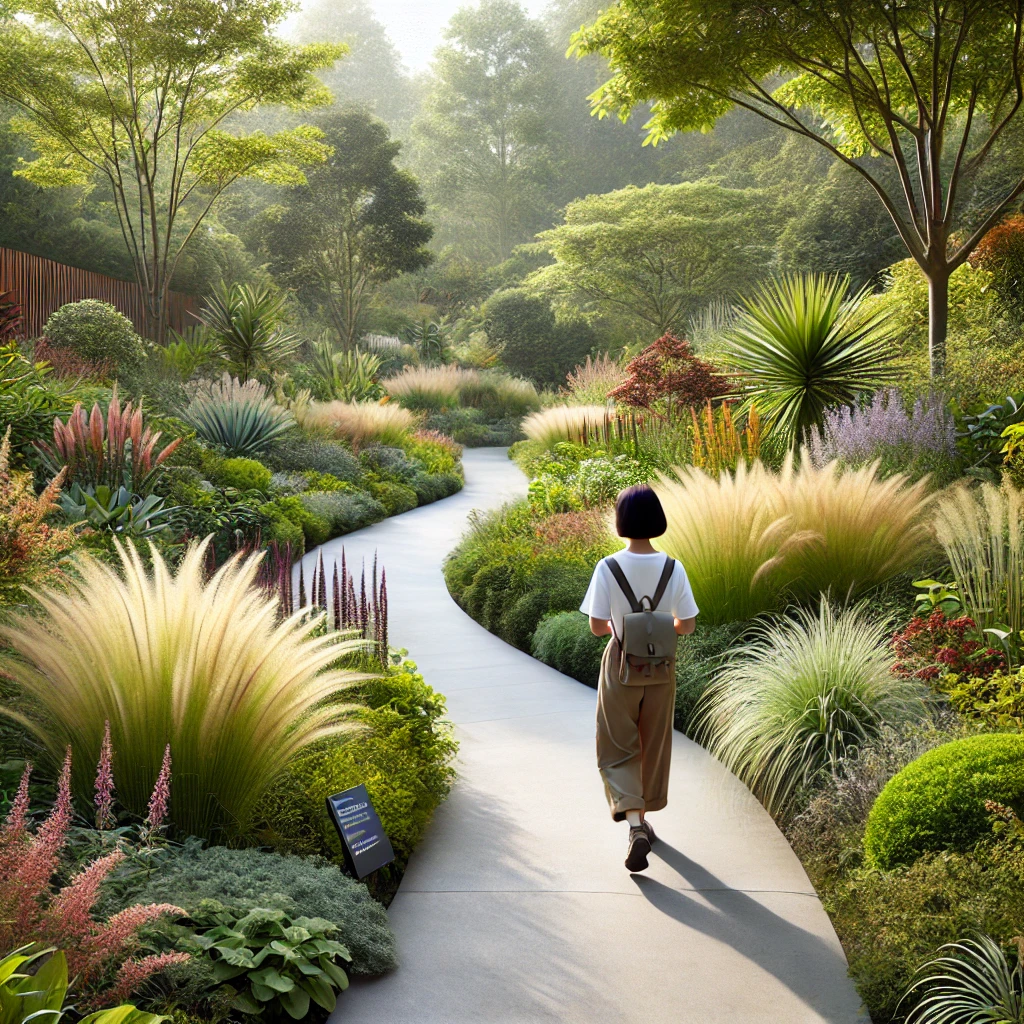ChatGPT:
The Royal Botanical Gardens (RBG) in Burlington, Ontario, Canada, is one of the country’s most renowned botanical institutions and the largest in the country. Spanning over 2,700 acres, the gardens showcase diverse landscapes, including cultivated gardens, nature sanctuaries, and hiking trails.
The RBG is divided into several key areas:
- Hendrie Park: Known for its formal gardens, including the Rose Garden and the Medicinal Garden, it also hosts seasonal art exhibitions and features tranquil water fountains and pathways.
- Rock Garden: A scenic area of beautifully designed rock formations, pools, and waterfalls, this section offers a more rugged and picturesque look at plant life. It is a popular spot for visitors due to its stunning flower displays throughout the year.
- Arboretum: Home to an impressive collection of trees, including native species and exotic varieties, it’s especially beautiful during autumn when the foliage changes colors.
- Laking Garden: Famous for its iris and peony collections, this garden is a colorful highlight in the summer months.
- Cootes Paradise: A vast nature reserve and wildlife sanctuary, it includes wetlands, forests, and marshes, with extensive hiking trails and opportunities for bird watching.
RBG also serves as a center for research and conservation, focusing on plant biodiversity and environmental sustainability. Educational programs, workshops, and seasonal events like the winter holiday light displays and summer concerts make it a year-round destination for nature lovers.
The Royal Botanical Gardens (RBG) in Burlington have a rich history that dates back to the early 20th century, rooted in a vision to conserve nature and educate the public about plant life. Here’s a look at its origin, history, and development:
Origin and Early Beginnings (1927-1940s)
The idea for the gardens emerged in the late 1920s when Thomas Baker McQuesten, chairman of the City of Hamilton Parks Board and a provincial minister, advocated for the transformation of a degraded area between Hamilton and Burlington into a public garden. The site included Cootes Paradise, a marsh and woodland area, as well as lands along the Niagara Escarpment.
McQuesten, along with landscape architect Lorrie Dunington-Grubb, envisioned creating a garden that would rival the great botanical gardens of Europe. In 1930, the area was officially designated as the Royal Botanical Gardens, and its name was given royal assent by King George V.
Early Development and Establishment (1940s-1960s)
The RBG was formally established in 1941 under the Ontario Ministry of Agriculture. The initial focus was on rehabilitating the land, much of which had been deforested and damaged due to farming and other uses. Planting projects were undertaken to restore native flora and create formal garden areas.
During the 1940s and 1950s, RBG began expanding its horticultural collections and building some of its most well-known gardens, including the Rock Garden, which opened in 1932 as the first public space within the gardens. Other gardens like Hendrie Park and the Laking Garden were also developed during this period.
Growth and Conservation Efforts (1960s-1980s)
In the 1960s and 1970s, RBG shifted its focus toward conservation and environmental education, reflecting a broader societal concern with ecological preservation. The Arboretum was expanded to include a wide variety of tree species, and efforts were made to restore Cootes Paradise as a vital wildlife sanctuary. The marshes were cleaned up, and programs were introduced to protect species at risk.
Throughout the 1980s, the gardens continued to grow as a center for both botanical research and public education. Nature trails were expanded, and more formal garden displays were added to the cultivated areas.
Modern Development and Focus on Sustainability (1990s-Present)
In the late 20th and early 21st centuries, the RBG embraced a stronger commitment to biodiversity, sustainability, and ecological research. This period saw the launch of several environmental initiatives, including the restoration of the Cootes Paradise marsh, which had suffered due to urbanization. A fishway was built to protect native fish species and improve water quality, and wetland areas were rehabilitated to enhance biodiversity.
Major improvements to infrastructure and visitor services have also taken place, including the renovation of the historic Rock Garden in 2016, designed to balance aesthetic beauty with environmental sustainability. The gardens now feature more eco-friendly practices, with a focus on native plant conservation, pollinator habitats, and sustainable horticultural techniques.
RBG Today
Today, RBG continues to grow as a leading botanical garden in Canada, with a blend of scientific research, conservation, and education at its core. It is also a significant cultural and recreational destination, attracting visitors year-round to its gardens, nature reserves, and educational events.
The Royal Botanical Gardens (RBG) consist of multiple distinct areas, each offering unique landscapes, features, and plant collections. Here’s a detailed description of the main areas and their specific features:
1. Hendrie Park
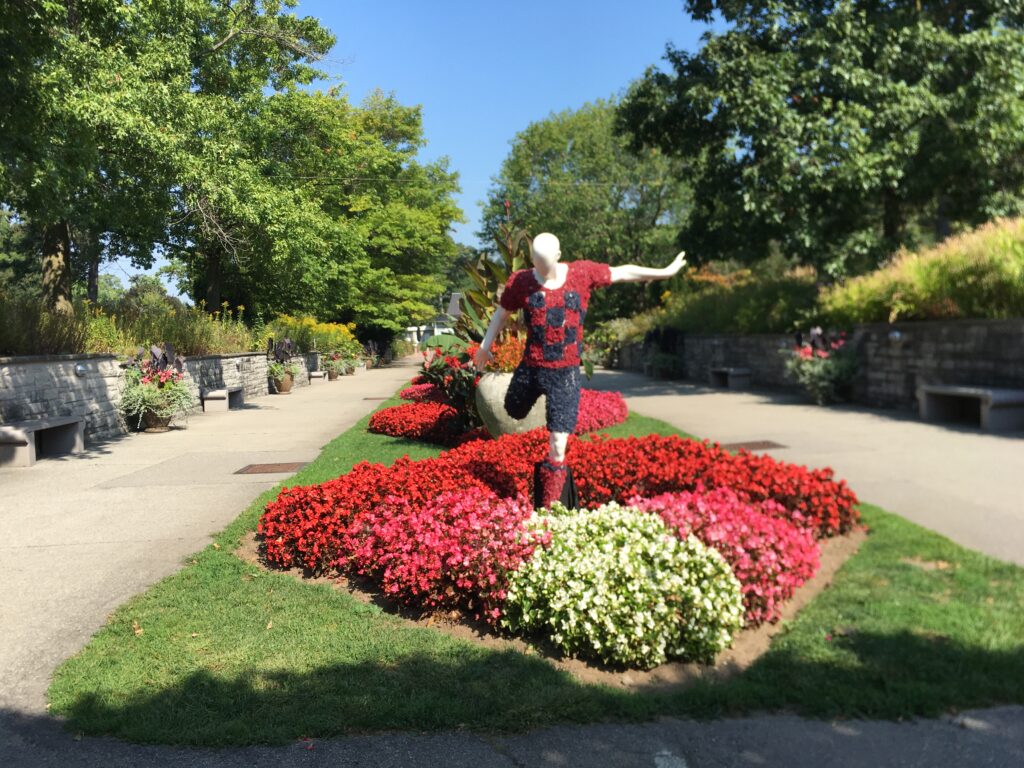
Hendrie Park is the largest of the cultivated gardens at RBG and is known for its formal displays and diverse plant collections.
- Rose Garden: This garden is one of the largest in the area and features hundreds of rose varieties, including modern hybrids and heritage roses. The blooms peak during the summer months, offering a spectacular display of color and fragrance.
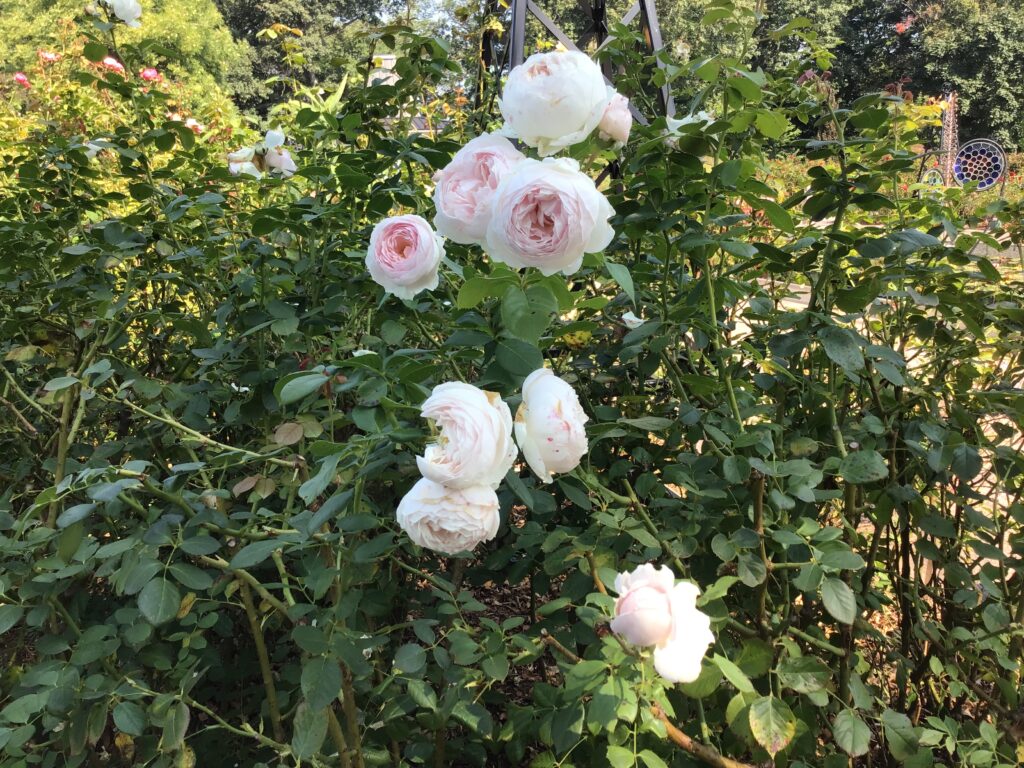
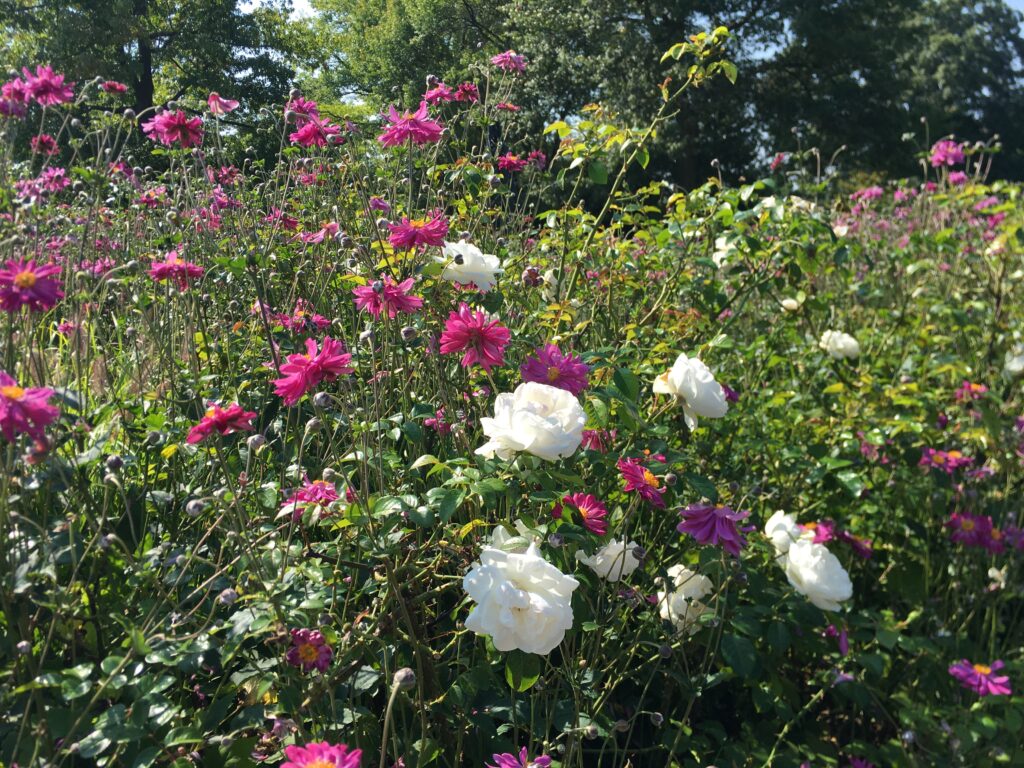
- Scented Garden: Specifically designed to engage the senses, this garden includes fragrant plants like lavender, rosemary, and other herbs that visitors can touch and smell.
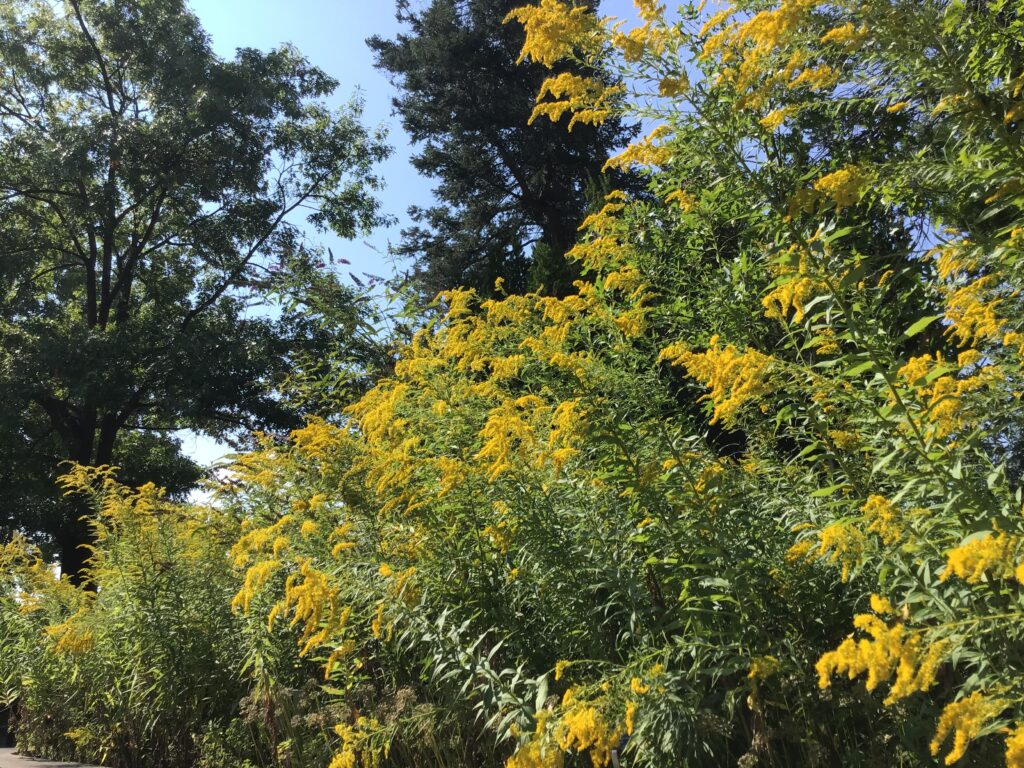
- Medicinal Garden: This area highlights plants used in traditional and modern medicine, providing educational information about their historical and contemporary uses.
- Seasonal Art Exhibits: Hendrie Park also hosts temporary outdoor art exhibitions, integrating artistic expressions into the natural environment.
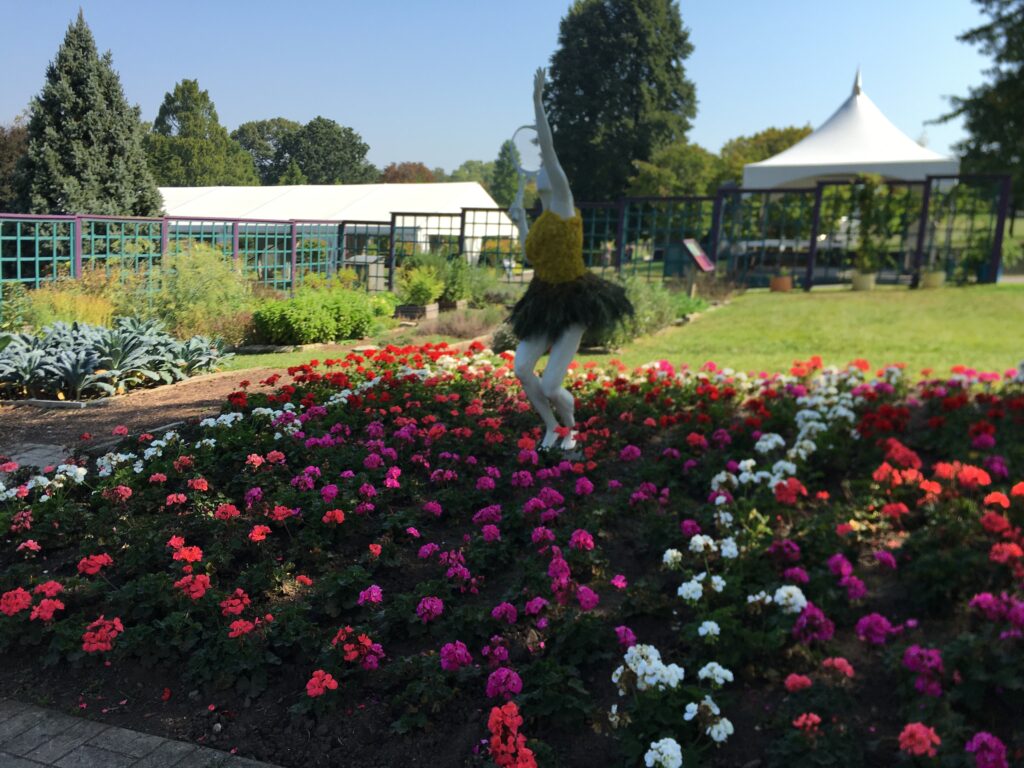
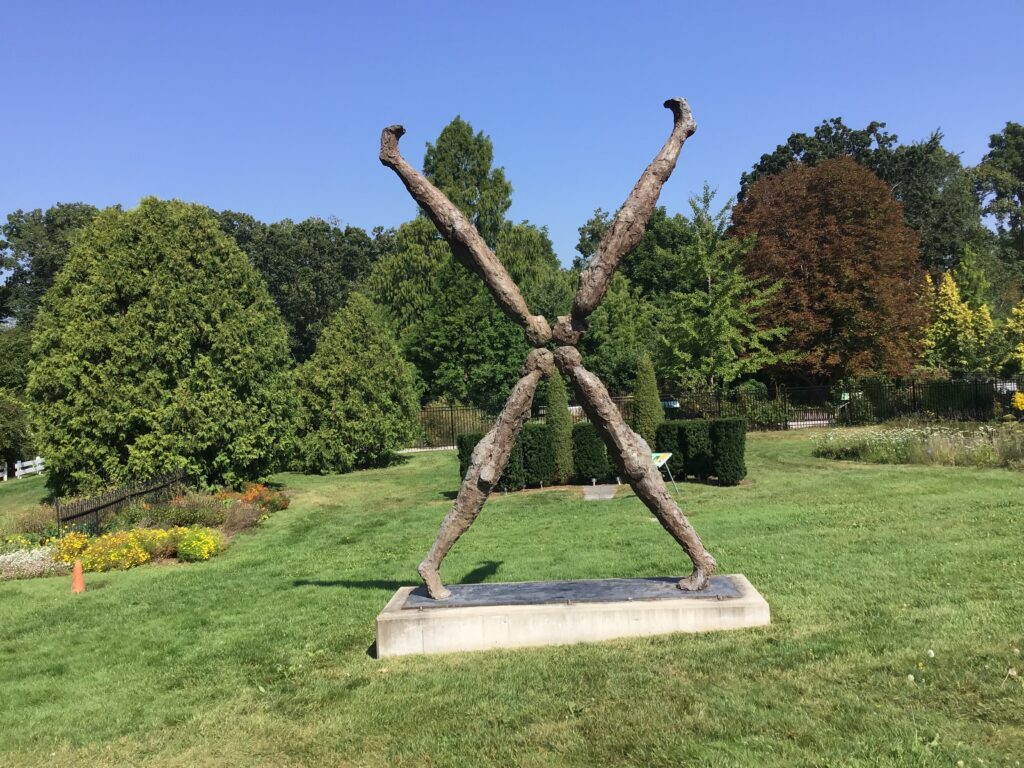
- Fountains and Water Features: A series of fountains and water features provide a serene and relaxing atmosphere.
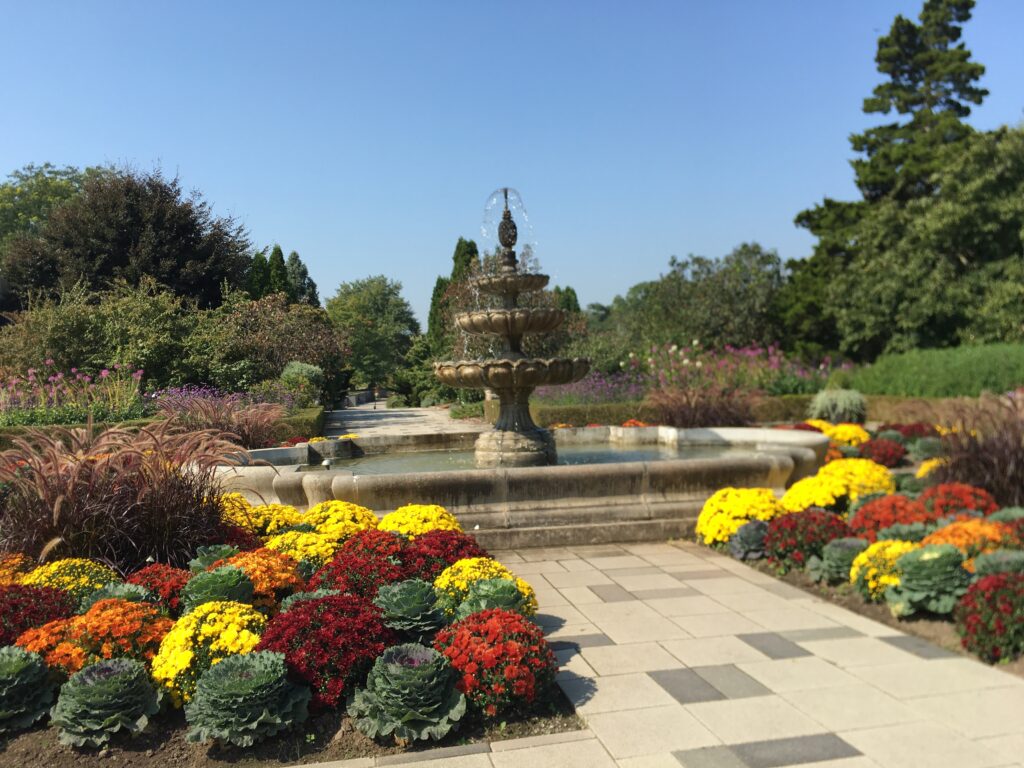
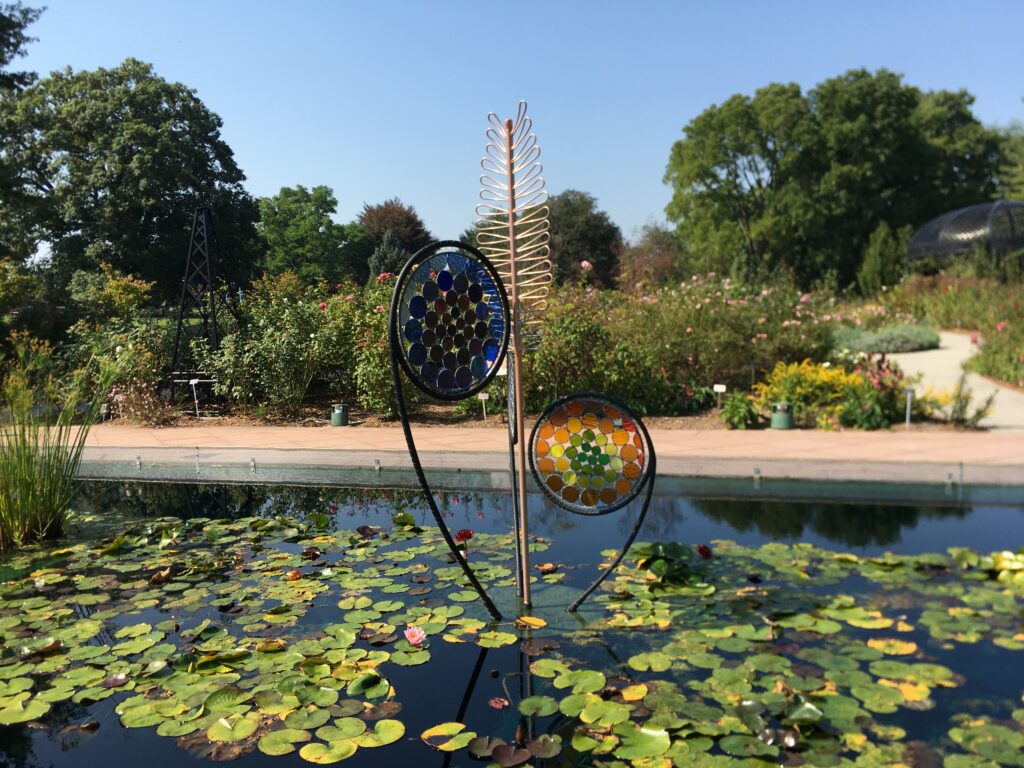
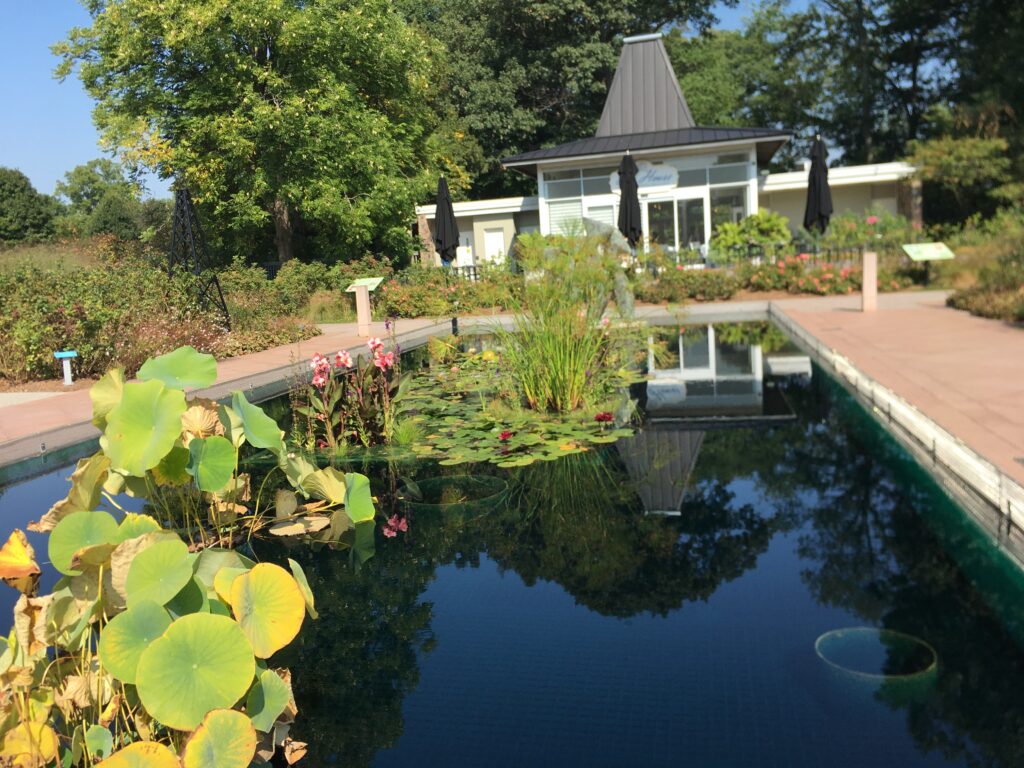
2. Rock Garden
The Rock Garden is one of the most iconic areas at RBG, with a rugged yet picturesque landscape designed to showcase alpine and rock-loving plants.
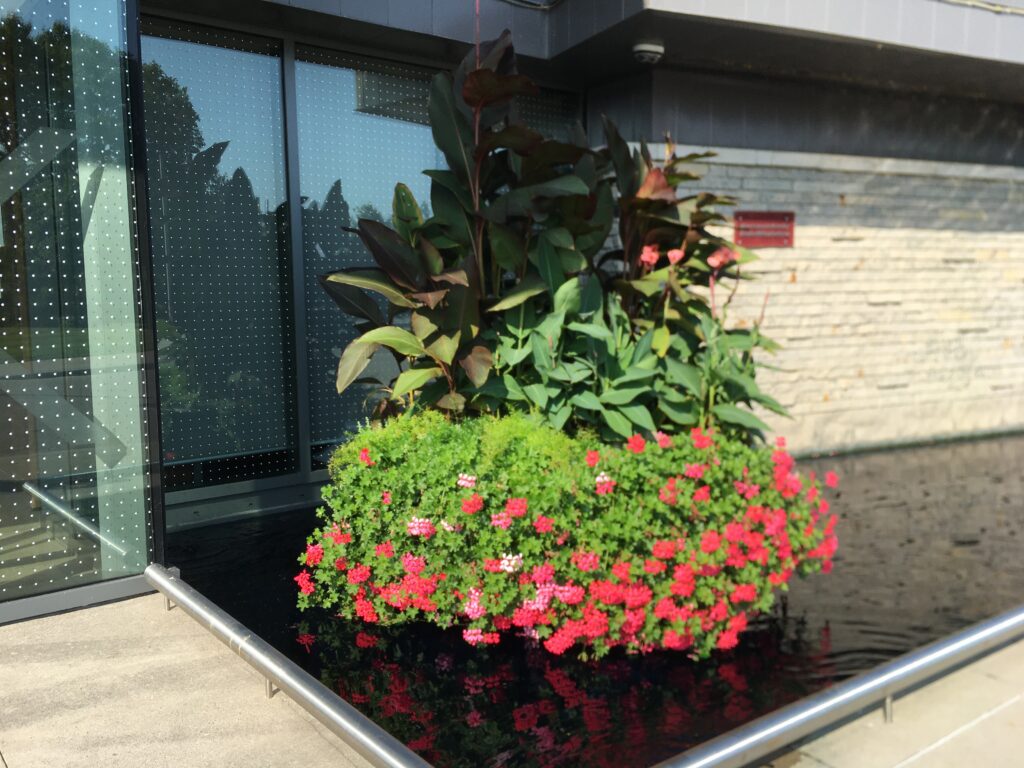
- Rock Formations: This garden is built around striking rock formations and terraced plantings, creating a unique environment for alpine flowers, succulents, and perennials.
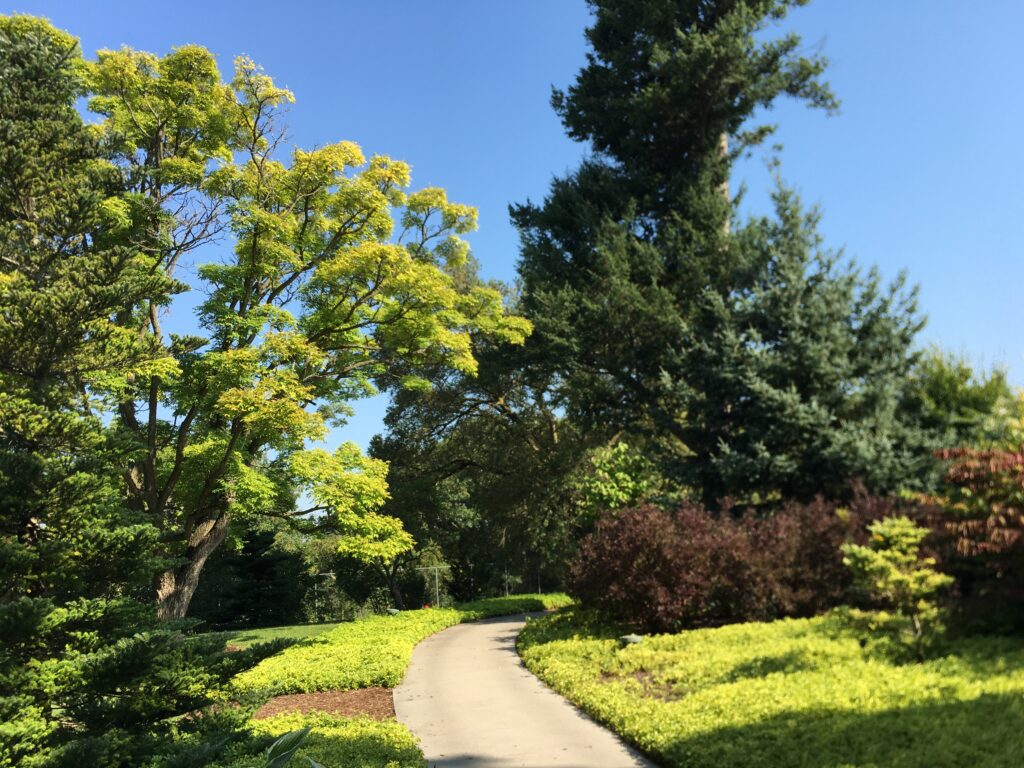
- Waterfalls and Ponds: The garden’s cascading waterfalls and reflective pools add a sense of tranquility and are home to aquatic plants.
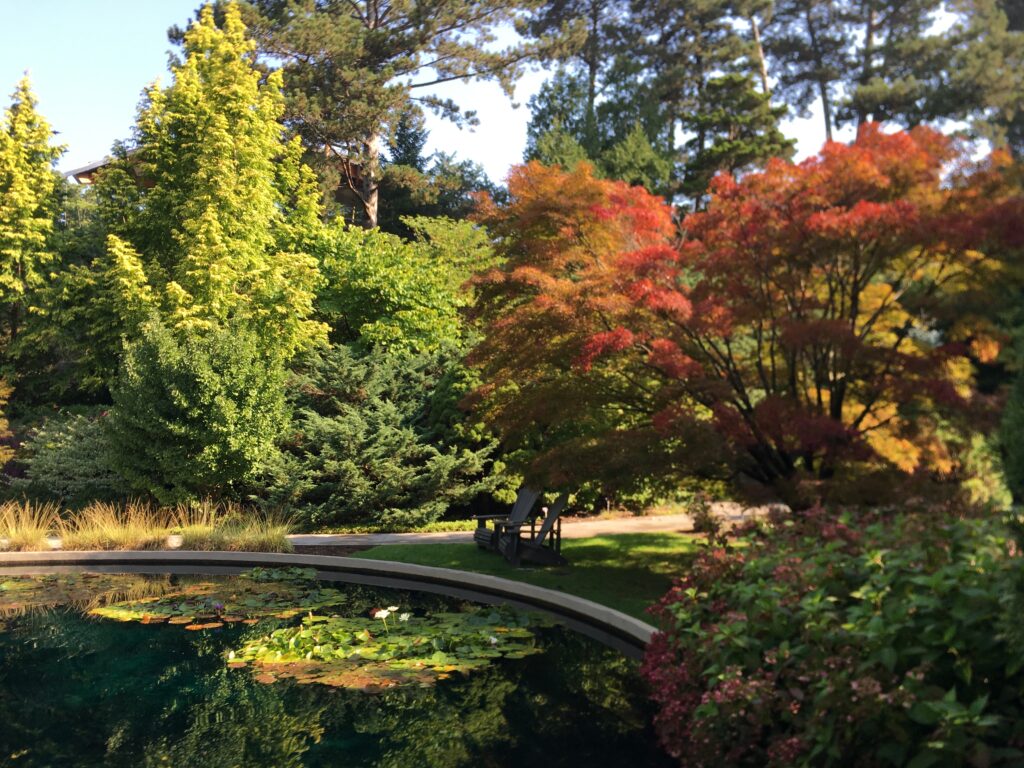
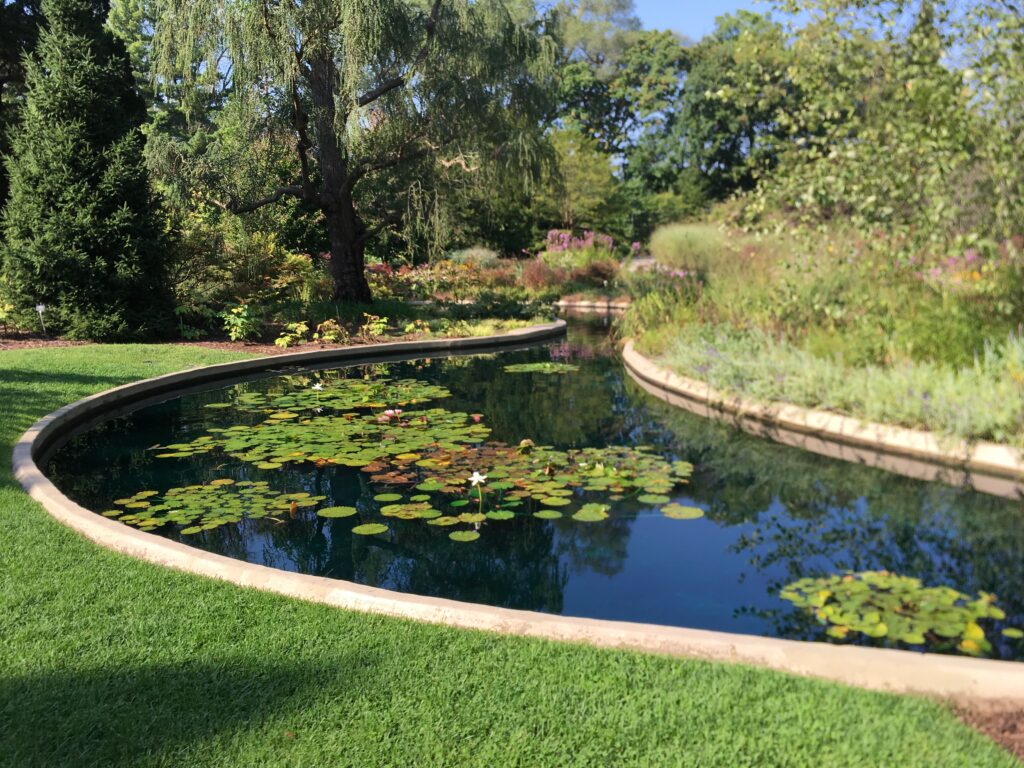
- Seasonal Flower Displays: The Rock Garden is famous for its changing displays of flowers throughout the year, including spring bulbs, summer perennials, and fall foliage.
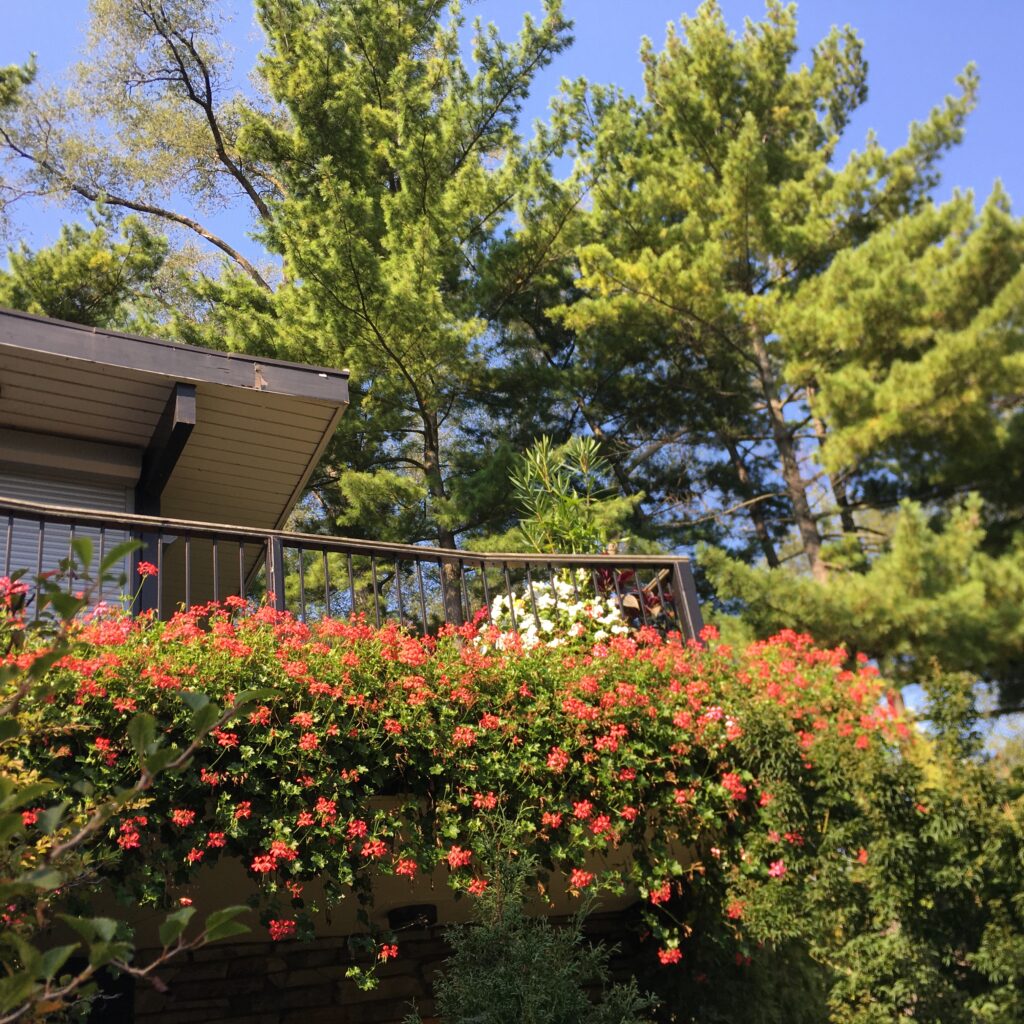
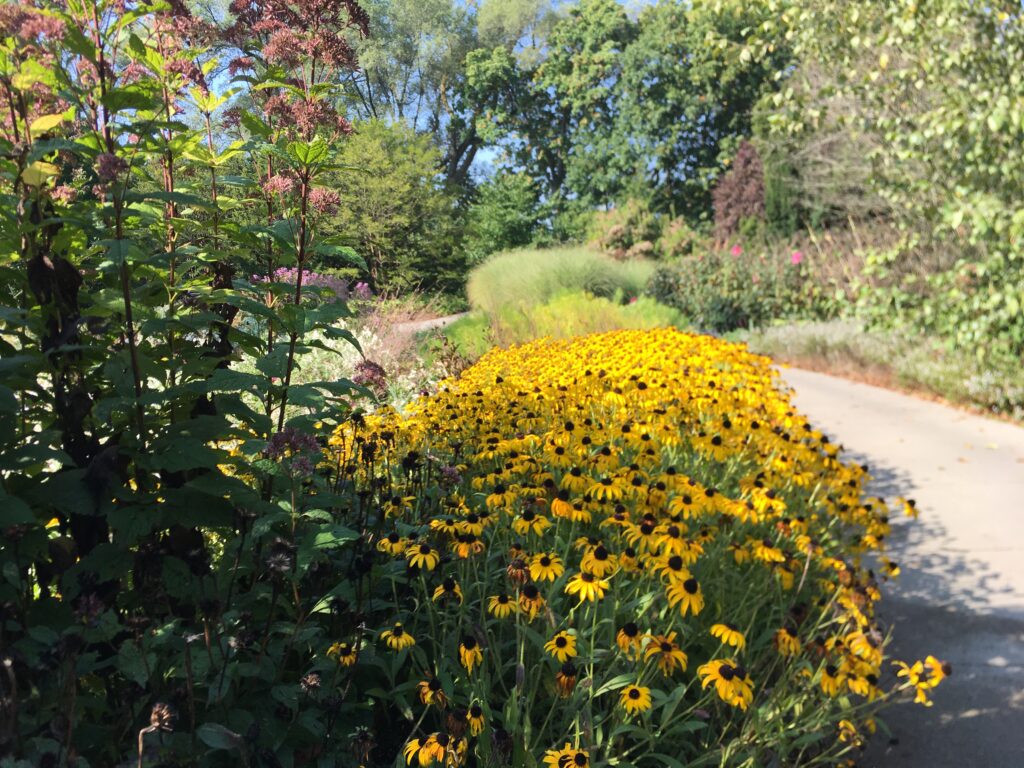
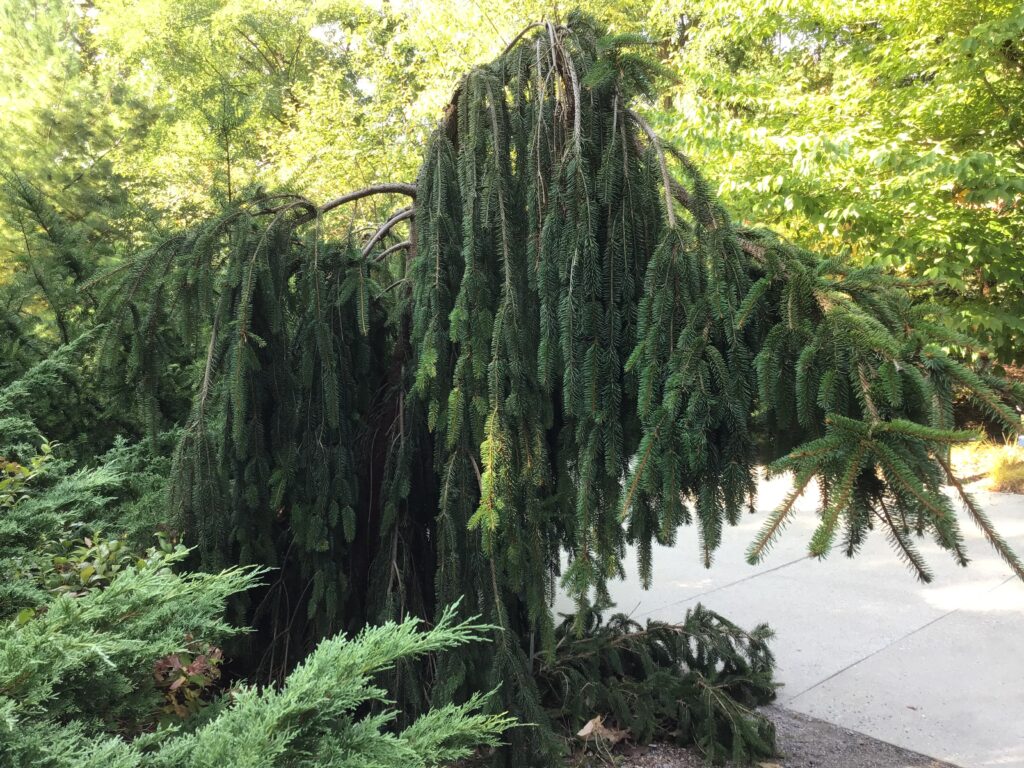
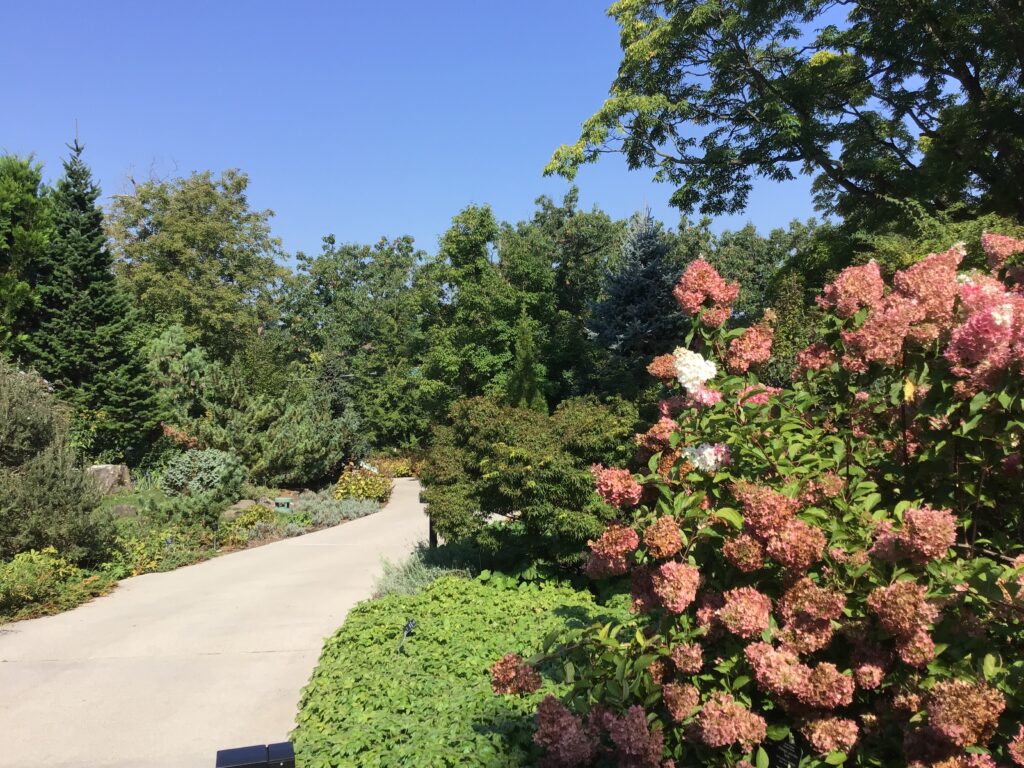
- Renovated Visitor Centre: A recent renovation in 2016 updated the Rock Garden with a modern visitor center featuring environmentally sustainable design elements.
3. Laking Garden
Laking Garden is renowned for its stunning collection of perennial flowers and is a must-visit area during the late spring and summer months.
- Iris Collection: The Laking Garden boasts a large variety of irises, with peak bloom in late spring. The irises are planted in wide beds, offering a dazzling display of color.
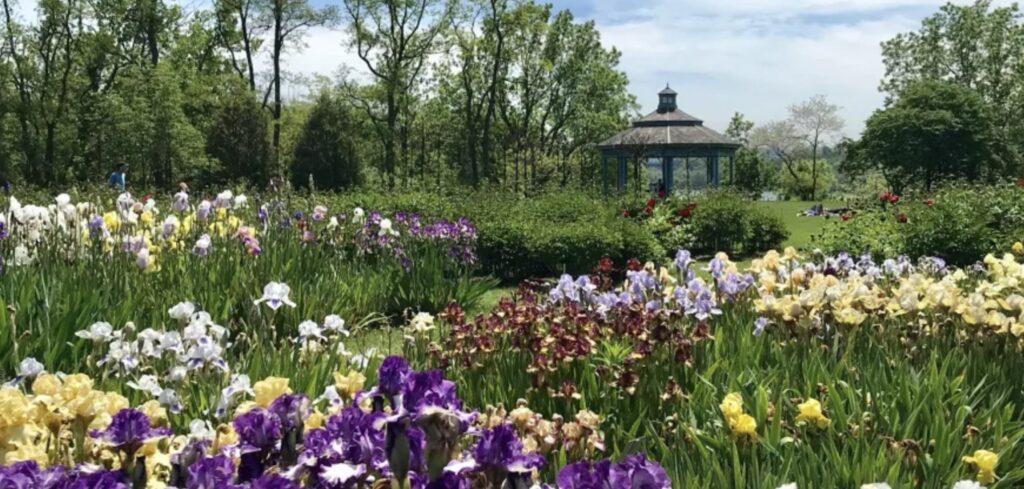
- Peony Collection: Peonies are the highlight of this garden in early summer, with a variety of cultivars on display, including heirloom varieties that have been part of the collection for decades.
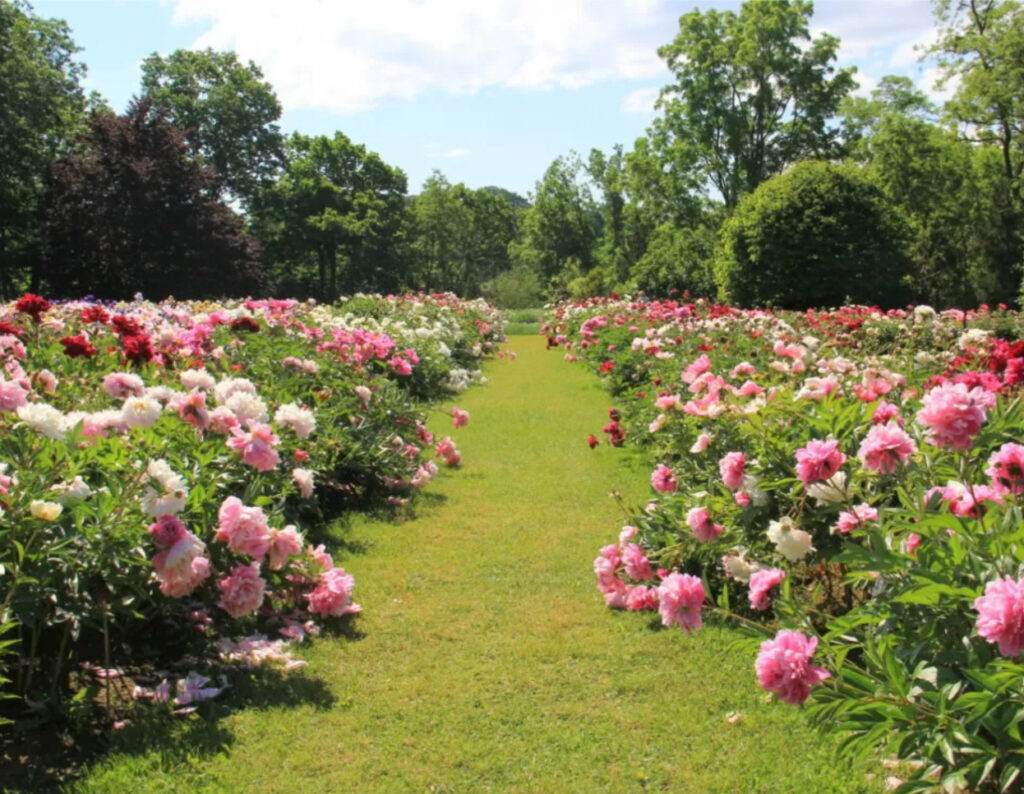
- Perennial Borders: The garden features mixed borders of perennials, arranged to provide continuous blooms from spring through fall.
- Open Spaces: Laking Garden is more open and informal compared to other areas, making it an ideal space for quiet reflection and leisurely walks.
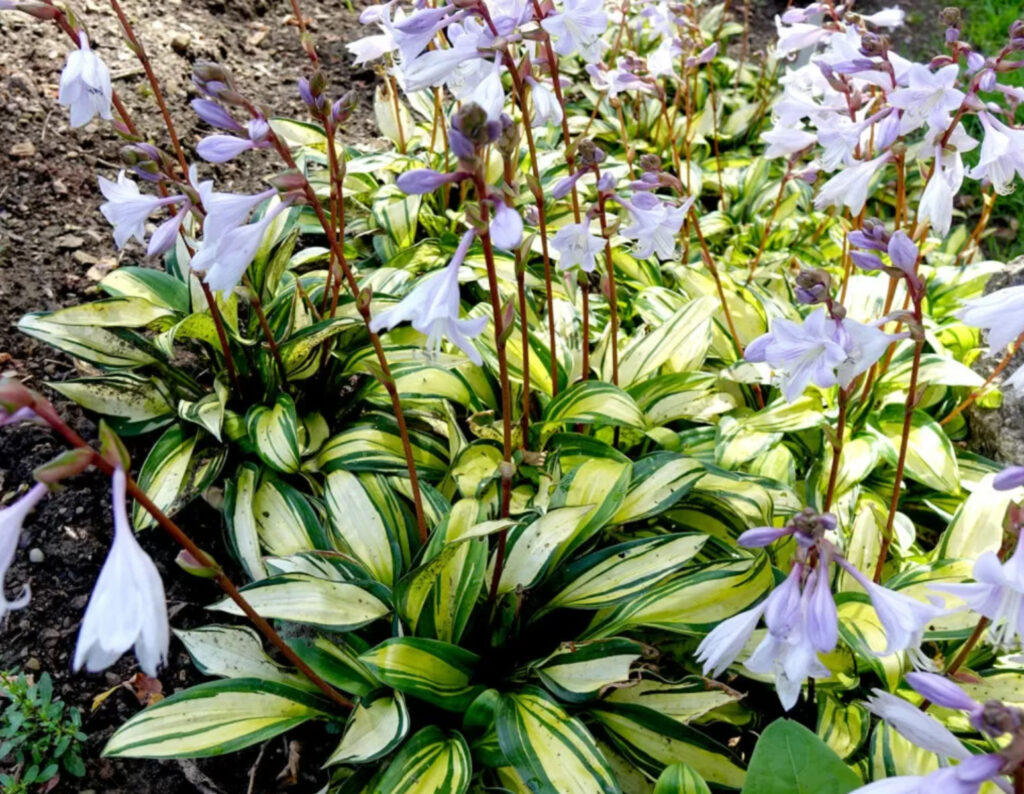
4. Arboretum
The Arboretum is home to RBG’s tree collections and provides a peaceful forest-like setting, perfect for walking and birdwatching.
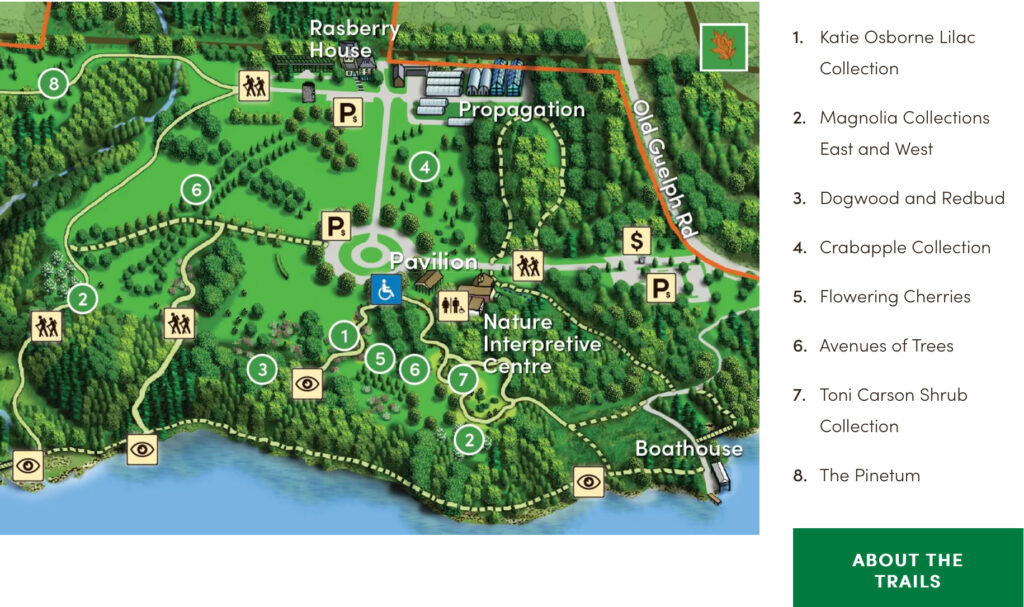
- Tree Collections: The Arboretum features both native and exotic trees, including oak, maple, hickory, and beech. There are also rare and endangered tree species.
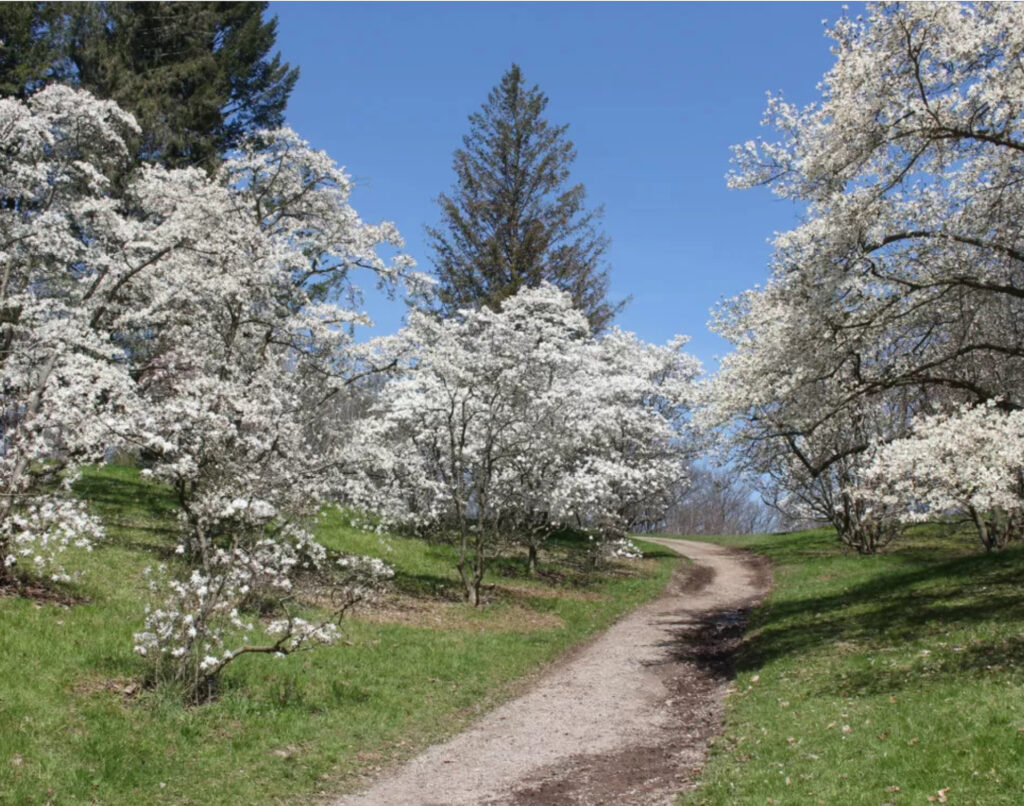
- Magnolia Collection: A highlight in spring, the magnolias bloom in a variety of colors and sizes, creating a spectacular display.
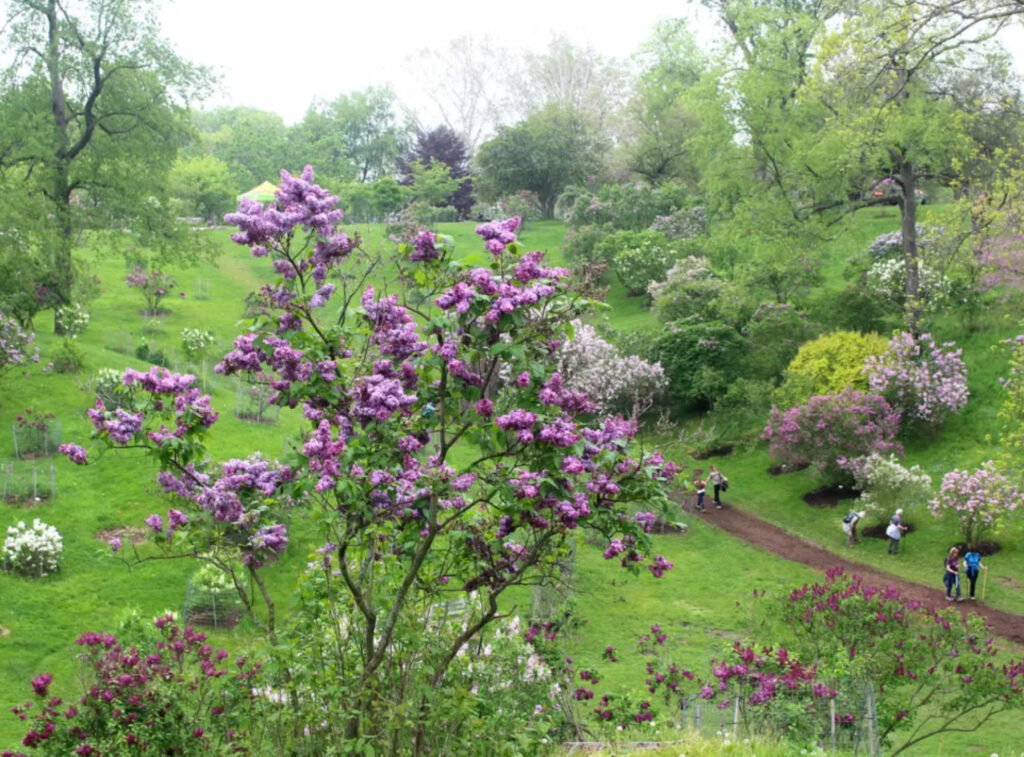
- Autumn Colors: In fall, the Arboretum becomes one of the best places in the region to see vibrant autumn foliage.
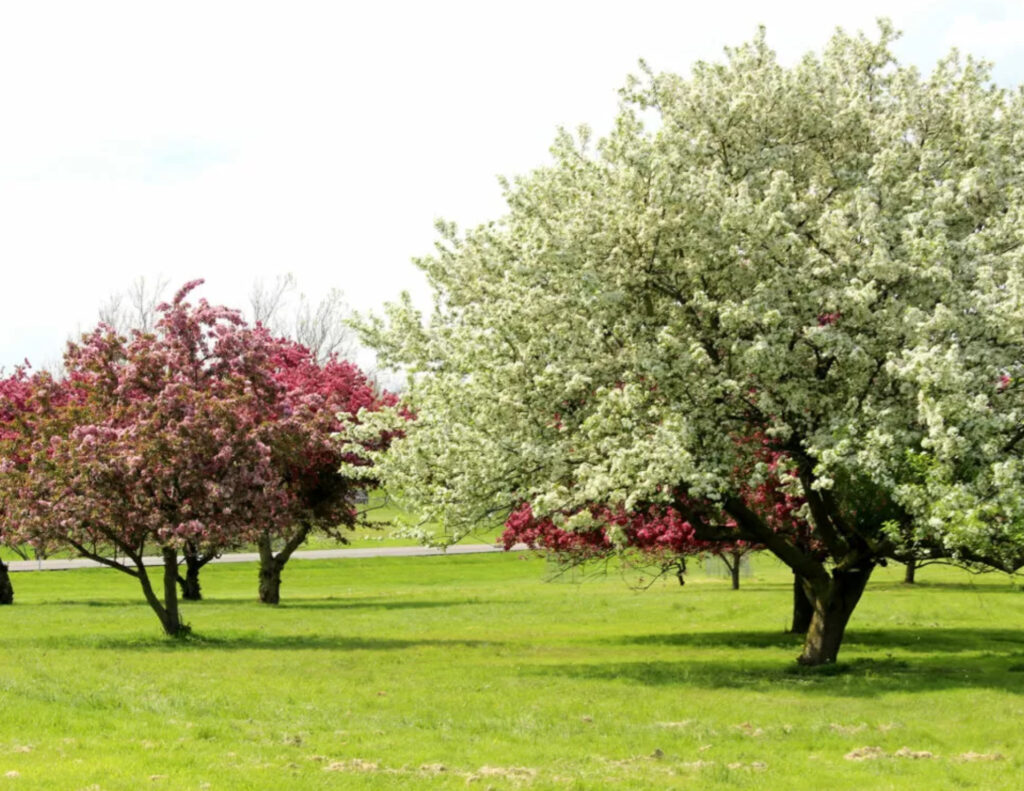
- Bird Watching: The Arboretum is home to many bird species, making it a popular spot for birdwatchers.
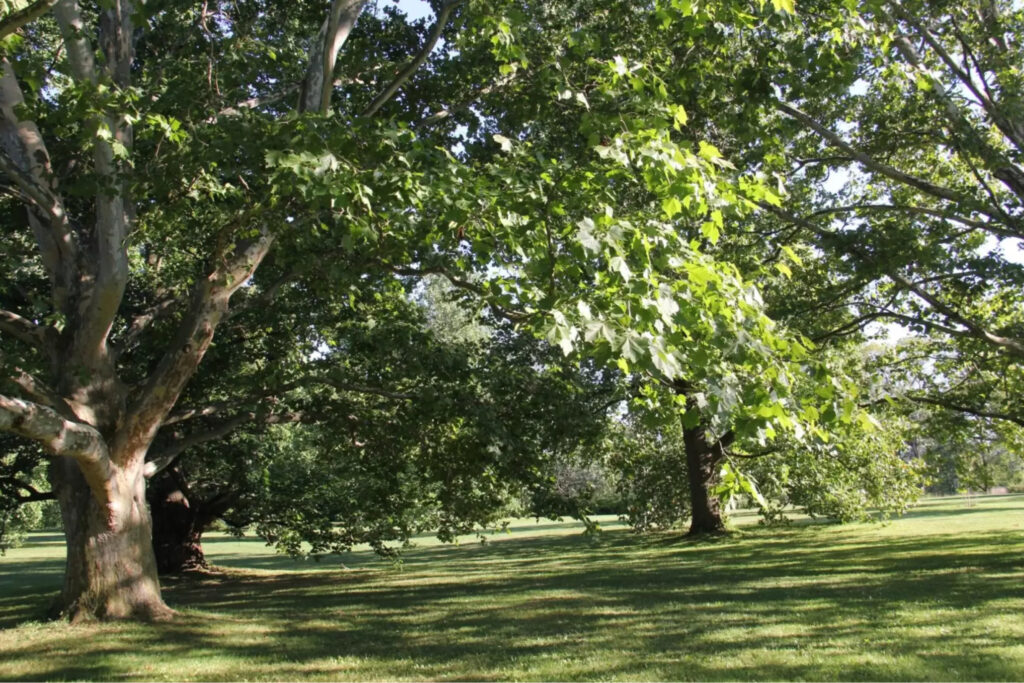
5. Cootes Paradise Sanctuary
Cootes Paradise is one of the most ecologically significant areas of RBG, a large wetland and woodland sanctuary that supports a rich diversity of wildlife.
- Marshland: The heart of Cootes Paradise is its vast marsh, which is home to a variety of aquatic plants, fish, and bird species. Canoeing and kayaking are popular activities in this area.
- Fishway: A special structure has been built to control the movement of invasive species while allowing native fish to pass between the marsh and Lake Ontario.
- Nature Trails: There are over 16 kilometers of trails in Cootes Paradise, offering opportunities for hiking through forests, meadows, and along the shores of the marsh.
- Bird Watching: The sanctuary is a haven for bird species, particularly waterfowl and migratory birds, making it a favorite spot for birdwatchers.
- Rehabilitation Efforts: RBG has undertaken significant restoration projects in this area, including removing invasive species and replanting native flora to improve water quality and biodiversity.
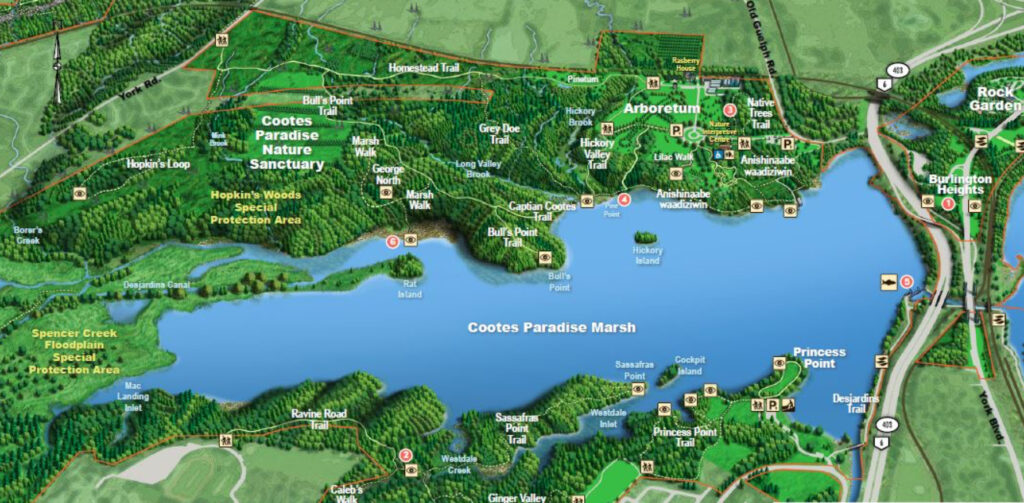
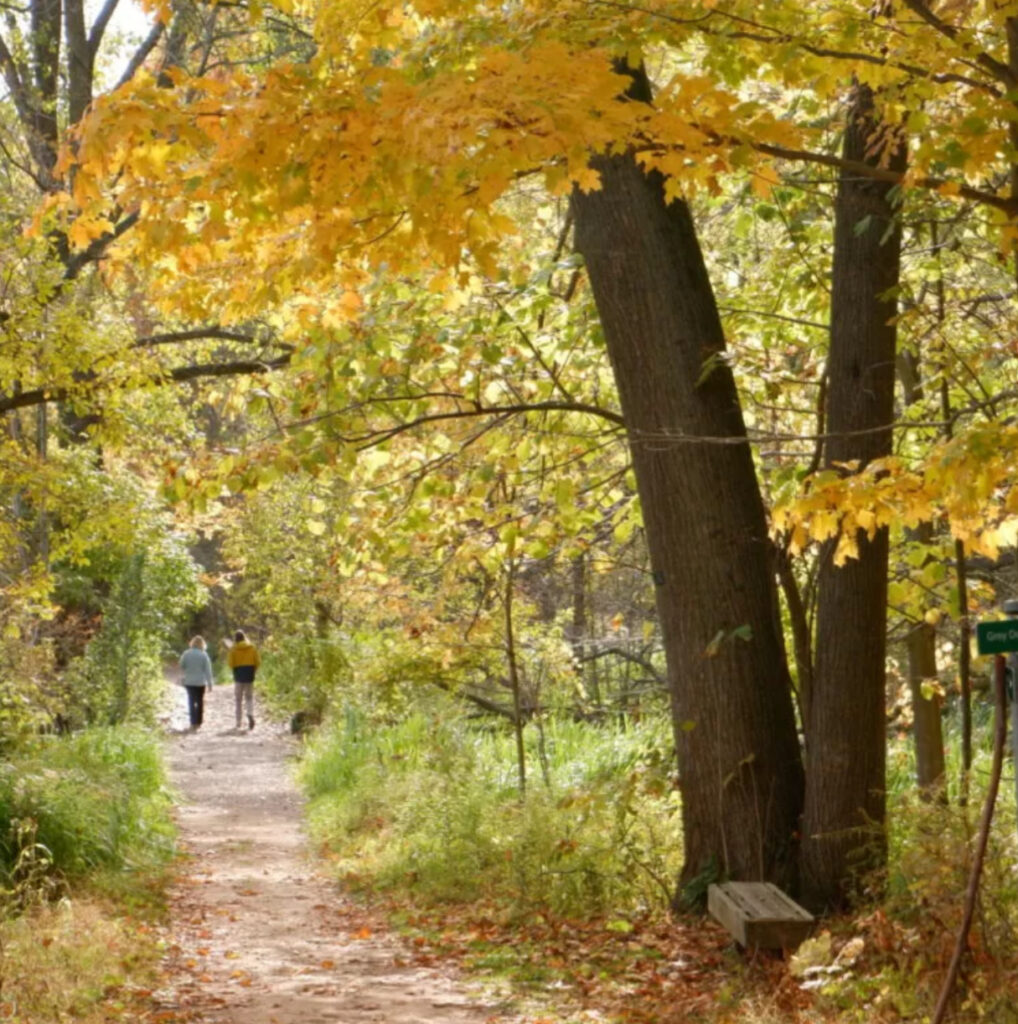
6. RBG Centre
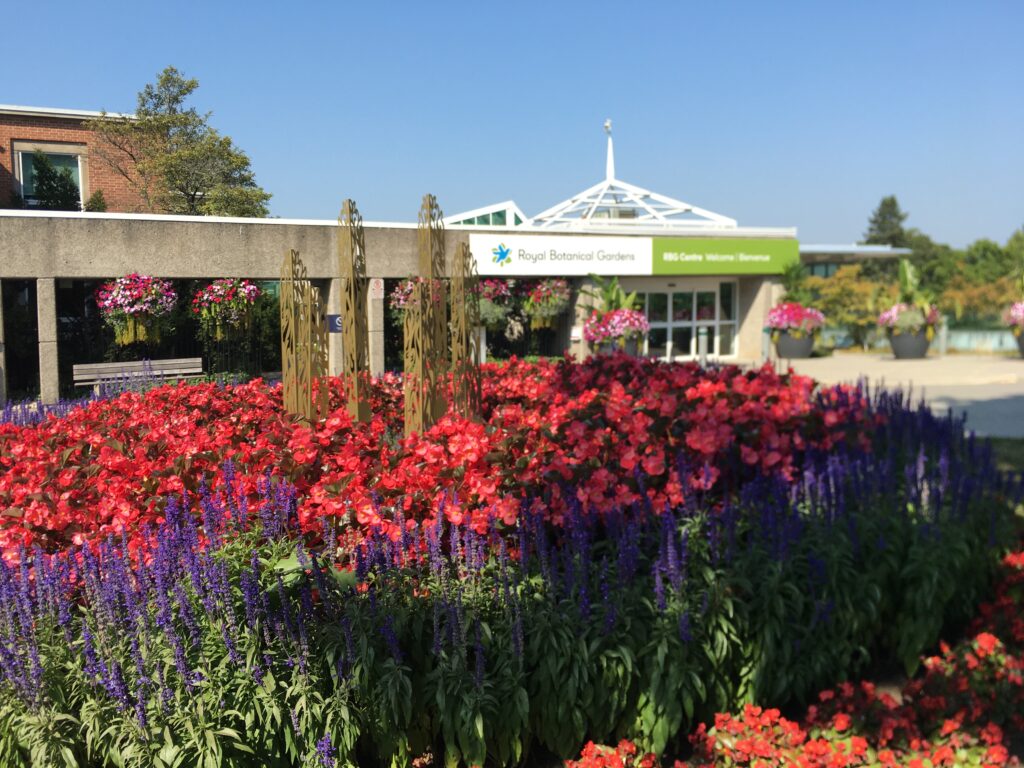
The RBG Centre serves as the main entrance to the gardens and is home to many indoor features, educational exhibits, and research activities.
- Mediterranean Garden: Inside the RBG Centre, this indoor garden replicates a Mediterranean climate, featuring olive trees, lavender, citrus trees, and succulents.
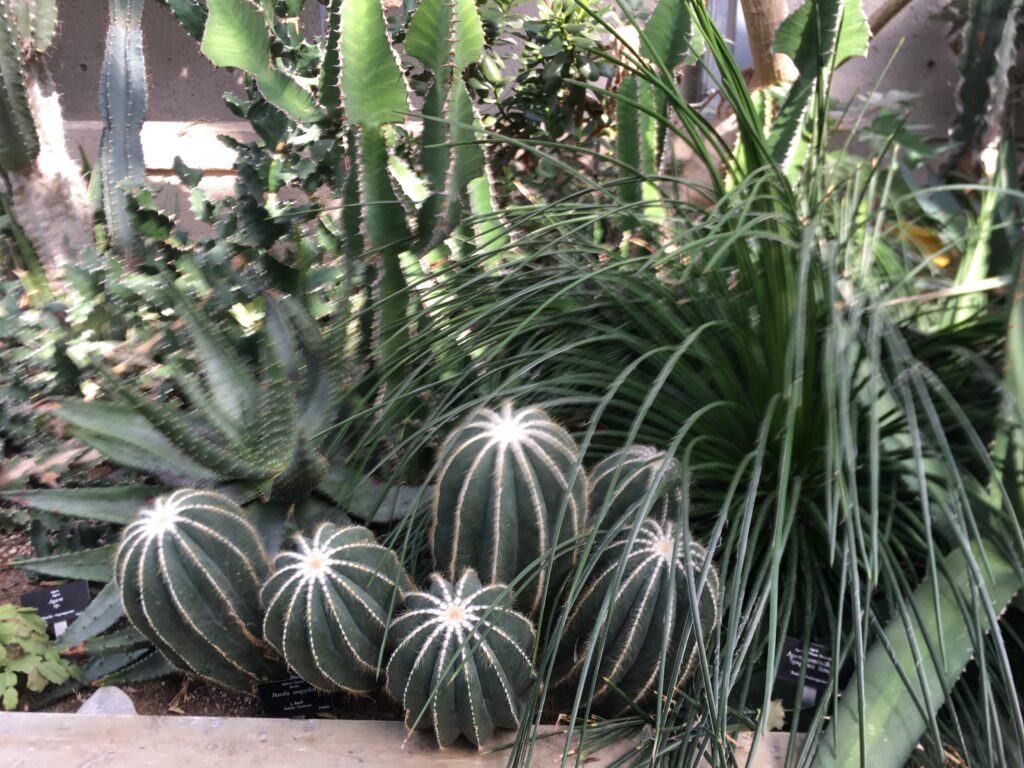
- Discovery Garden: An interactive space designed for children and families, featuring educational displays and hands-on activities to inspire a love for nature.
- The Greenhouse: The Centre’s greenhouse showcases seasonal plant displays and offers a controlled environment for delicate or tropical species.
- Exhibitions and Events: RBG Centre hosts rotating indoor exhibitions on botanical and environmental topics, as well as lectures and workshops.
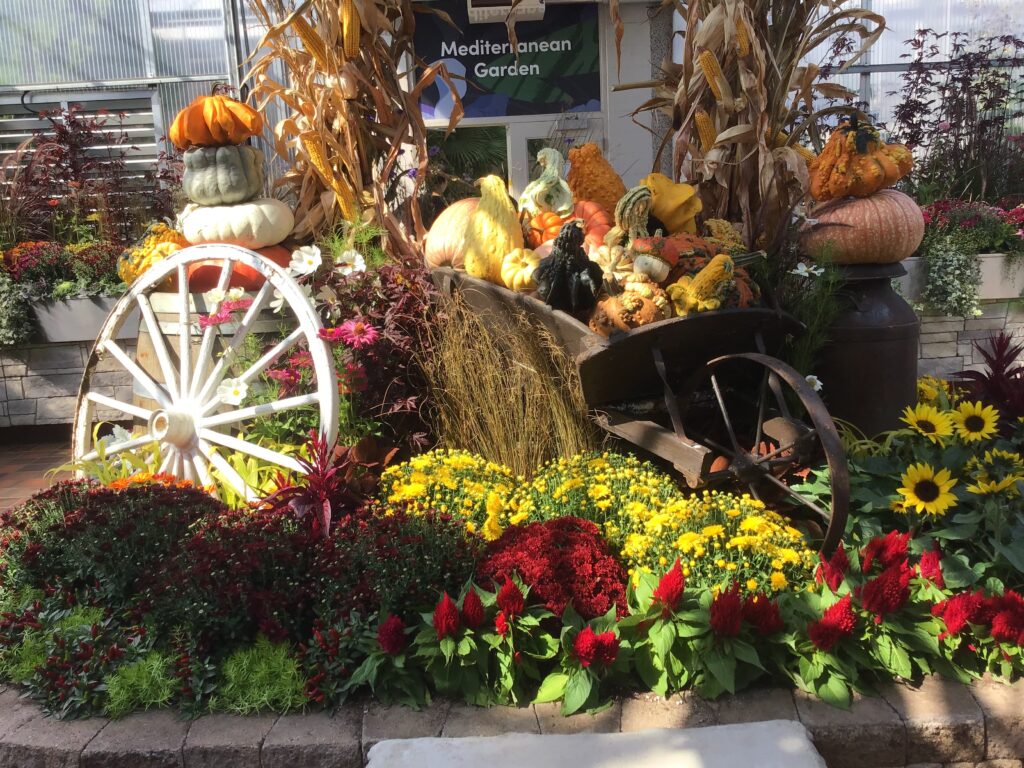
- Café and Gift Shop: Visitors can enjoy refreshments at the café or shop for plants, books, and gifts in the garden shop.
These diverse areas make the Royal Botanical Gardens a multi-faceted destination that caters to both casual visitors and nature enthusiasts, offering a blend of formal garden beauty and wild, preserved natural landscapes.
